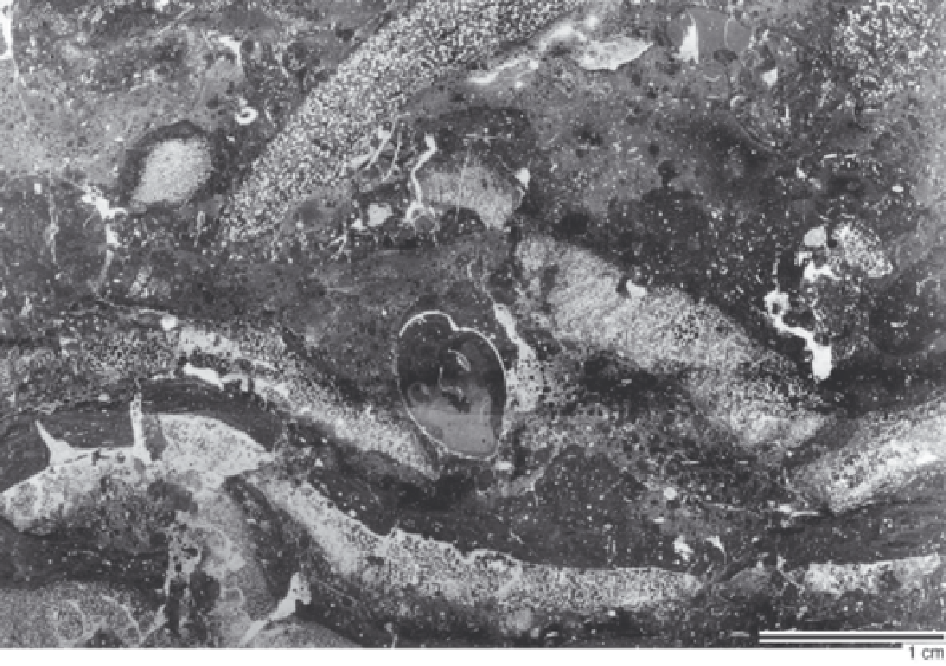Geology Reference
In-Depth Information
•
Nutrients: Sponges are suspension feeders. Nutri-
ents are planktonic bacteria, organic particles and
dissolved organic matter. Deeper-living sponges are
exclusively heterotroph, whereas demosponges liv-
ing in well-lighted environments may be autotroph
due to the association with photosynthetic cyano-
bacteria.
Bank by demosponges: Wiedenmayer 1978), but rather
more important as cryptic constituents of coral reefs.
However, the recent exciting discovery of impres-
sive reefs off British Columbia, formed by hexactin-
ellids in waters 180 to 250 meters deep, has changed
this view (Krautter et al. 2002). These reefs are par-
ticularly interesting because they may provide a living
comparison to extensive reefs created by hexactinellids
throughout the Jurassic.
•
Substrate: Most demosponges and hexactinellids
need hard substrates (rock surface, shells), but hexac-
tinellids with rhizomes also occur on soft substrates
in the deep sea.
Sponges with a soft body occur in cryptic habitats
of modern and ancient reefs. These sponges have a low
preservation potential, unless the dispersal of the spi-
cules after the decay of the dead sponge can be pre-
vented by an early taphonomic calcification of the
sponge tissue. As shown by the preservation of non-
rigid sponges in Late Jurassic oyster patch reefs, this
calcification may sometimes be induced by het-
erotrophic, symbiotic bacteria inhabiting the soft parts
of the sponges (Delecat et al. 2001).
•
Sediment input: Deposition of too much sediment
will effect sponge distribution negatively.
•
Water energy: Sponges occur predominantly within
quiet-water environments; they are rare in high-en-
ergy environments (crustose growth forms).
Sponges in reefs:
In the past, modern sponges were
not considered to be major reef-builders (e.g. bio-
constructions formed in shallow waters of the Bahama
Fig. 10.34.
Siliceous sponges were important in Late Jurassic reefs.
The figure shows a marly sponge reef limestone with
dish-shaped siliceous sponges carrying thrombolitic microbial crusts at the tops (see Chap. 9.1). This microfacies origi-
nated at the base as well as on top of small bioherms formed above sedimentary continuities in relatively deep environ-
ments (Brachert 1992). Note fracturing caused by differential compaction. These gray and yellowish sponge limestones
are widely used as decorative building stones in central Europe. Late Jurassic (Kimmeridgian): Ludwag near Bayreuth,
northern Frankenalb, Bavaria, Germany.

